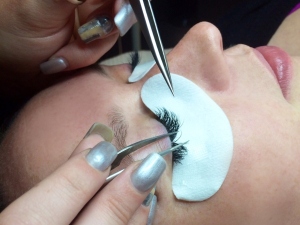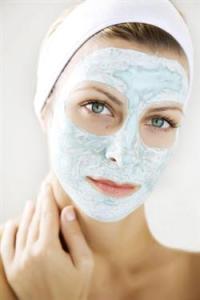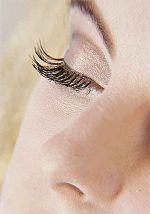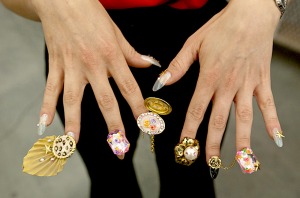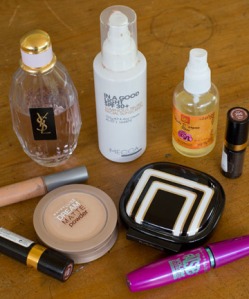There’s now barely a High Street that doesn’t have at least one nail bar. Last year, one in six new beauty start-up companies in the UK were nail salons and, with the average regular manicure costing around £20, it’s big business.
But more aggressive styles of nail treatment – a long way from the old-fashioned, straightforward file and polish – are leaving women vulnerable to infections, rashes and even skin cancer.
Poor regulation of the nail industry is heightening the problem.
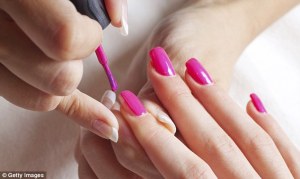
Currently, there is no legal requirement to be licensed as a manicurist and no qualifications are needed. Anyone at all can pick up a nail file and start advertising for clients.
It’s a worryingly lax state of affairs – particularly if Antonia’s experience is anything to go by.
She first started going to a nail bar near her home a few years ago, popping in every couple of weeks.
Her problems began when she was persuaded by her manicurist that her nails would look better for longer if she tried acrylic tips.
‘The first time I had them done, I was really pleased,’ she says.
‘They looked really natural and I didn’t need to polish them in between manicures. Even the tips, which usually take a bashing because I use the computer a lot, weren’t chipped.’
But when Antonia returned to the salon to have them replaced, it was a different story.
But it’s not just acrylics that are causing problems. Gel manicures – which involve a coloured gel being applied to the nails, hardened under a UV light and then removed with acetone weeks later – are also hugely popular, but could be posing a serious risk to women’s health.
While the trade in gel manicures is booming – because they last up to two weeks without chipping they are beloved of harried mothers and busy professionals alike – dermatologists are worried that the use of UV light could be raising the risk of skin cancer.
A study in 2009 found two middle-aged women with no family history of skin cancer, and only moderate exposure to sunlight, developed tumours on their hands following exposure to UV nail lights.
‘I would strongly suggest that women limit having this treatment to once or twice a year,’ says Dr Lowe.
Nail horror: Rebecca Mills had her gel nails removed in a dangerous way by a newly qualified and uninsured beautician
Nail horror: Rebecca Mills had her gel nails removed in a dangerous way by a newly qualified and uninsured beautician
But there are plenty of women out there – such as Karen Berman, 61 – who have gel manicures far more regularly.
‘I’m a bit of a beauty junkie and I try everything,’ says Karen, managing director of a London consultancy firm. ‘So when I was told about these two-week manicures a few years ago, I was excited to try them.’
‘I didn’t even think about what I might be doing to my nails and kept going back every few weeks to have the polish scraped off and re-done.’
But six months in, Karen’s natural nails looked awful. ‘It looked as though they had been eaten away at the sides. I was so shocked, I stopped the gel manicures and didn’t put anything on them at all for two months because they were so damaged.’
Thanks to months of careful attention and application of nail oils, her nails are now re-growing, but Karen worries that the chemicals and UV exposure involved could cause her problems in the long term.
And while gel manicures may be problematic in many ways, in the hands of an inexperienced practitioner, the issues are magnified horribly.
Accounts assistant Rebecca Mills, 26, found this out to her cost in July when she had her gel nails removed by a newly qualified – and, as she would later find out, uninsured – beautician. The separated mother of two, who lives with her daughters in Blackburn, watched in horror as her nails were filed right down to the nail bed.
‘By the time I realised what was going on, the damage had been done. That night, my fingers were throbbing so much, I had to take painkillers.
‘Now, I realise the girl had never removed gel nails before. So she just filed and filed away at the surface of my nail until most of it was gone.
‘She then put acrylic false nails on top and I could see there was blood pooling underneath.’
The false nails began to drop off after a couple of days, ripping even more of Rebecca’s nails away.
By now three of her fingers had virtually no nails left whatsoever.
Removing the acrylic coating was to prove much harder than applying it. As she quickly discovered, it could only be removed by sanding it off her nails.
‘They said they needed to file the surface of my nails down so the new acrylics would go on better. But they filed so aggressively that my nail bed started to bleed through my nail.
‘I also noticed the manicurist didn’t throw away the file, which didn’t seem at all hygienic.’
Yet Antonia wanted that glossy nail look to last – and so she persisted with the treatment for several more visits. Eventually, unable to take the agony of the filing any more, Antonia decided to go au naturel.
But when they were removed for good, she discovered that the nails left under the acrylic coating were paper thin, painful and sensitive.
‘Three days later, every single one of my natural nails had broken back to the quick.’
Dermatologist Dr Nick Lowe, president of the British Cosmetic Dermatology Group, warns of the dangers of this sort of aggressive nail treatment.
‘Vigorous scraping and filing can lead to permanent damage where the nail lifts from the nail bed,’ he says.
‘There is also risk of infection if manicure instruments are not sterilised properly. Fungal infections, bacteria and viruses such as herpes can all be passed on.’
He advises that those who like a professional manicure should take their own tools to the salon to reduce the risk of infection.
Some nail varnishes and hardeners also contain ingredients such as formaldehyde, which can trigger an allergic reaction.
‘The nail is an extension of your skin. It is grown from skin cells and it’s porous. If the nail or nail bed becomes damaged, it can take a long time to repair,’ says Dr Lowe.
